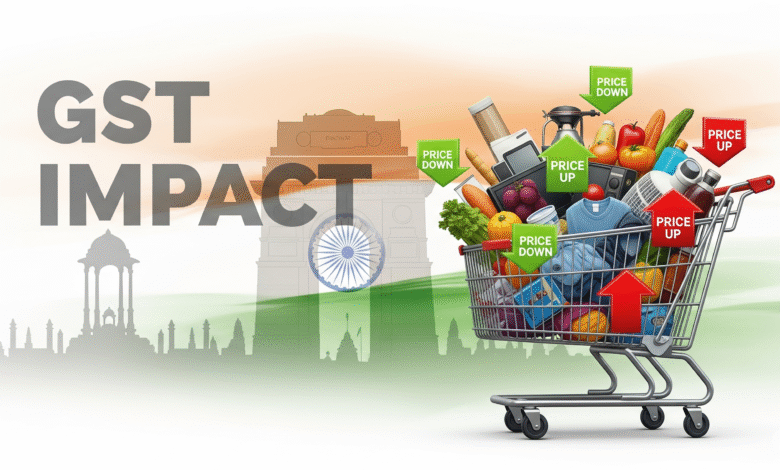GST Slab Change: Big Changes Coming to India’s GST Rules, What Will Be the Impact on Your Pocket?

GST Slab Change: A major change has been announced in India’s Goods and Services Tax (GST) system. The government has proposed to remove the 12% tax slab, which will directly affect millions of ordinary people and traders in India. As a result of this decision, some things may become cheaper, while some things are likely to become more expensive. Let’s find out the details of this change.
What is GST and its current structure
The GST system was introduced in India in 2017, which brought various indirect taxes like VAT and excise duty under a single tax. Currently, there are five main slabs in GST:
- 0%: Unbranded food grains, fresh fruits and vegetables.
- 5%: Essential items like cooking oil and footwear priced below ₹1000.
- 12%: Processed food, mobile phones and fruit juices.
- 18%: Soap, toothpaste, AC and restaurant services.
- 28%: Luxury goods, cars and tobacco.
In addition, there is a cess on some products and special rates for items like gold or precious stones.
Why is the 12% slab being removed?
The main reason for removing the 12% slab is to simplify the tax structure. Currently, there is confusion about many products as to whether they will fall under the 12% or 18% slab. Through this change, the government wants to have mainly three slabs – 5%, 18% and 28%. This will make it easier for traders to calculate tax and file returns.
Get Instant News Updates!
Join on TelegramWhat will be the impact on the common man?
The impact of this change could be mixed. All the products that are currently in the 12% slab will be moved to either the 5% or 18% slab.
- Things that can become cheaper: If a product is moved from the 12% to the 5% slab, its price will come down. For example, the price of some processed foods or mobile phones may come down.
- Things that can become more expensive: On the other hand, if a product is moved to the 18% slab, its price will increase.
This may cause some changes in the monthly budget of the common man.
Impact on businessmen and the economy
This change can be very beneficial for businessmen. As the tax structure becomes simpler, it will be easier for them to keep accounts and legal complications will be reduced. Small and medium enterprises (MSMEs) in particular will benefit from this. The government hopes that this change will improve the business environment in the country and will also facilitate international trade.
When will this new rule be effective?
The Prime Minister’s Office (PMO) has already approved this proposal. The final decision will be taken in the GST Council meeting after the monsoon session of Parliament. It is expected that this new tax structure may be implemented from April 2026.
This change is going to be a big step in the Indian economy. Common people and traders have to be prepared for this and see which products’ prices change in the coming days.

